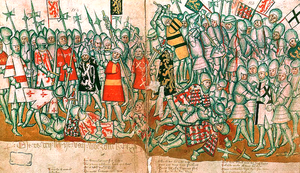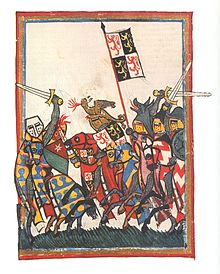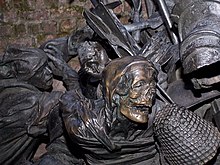
The Duchy of Limburg or Limbourg was an imperial estate of the Holy Roman Empire. Much of the area of the duchy is today located within Liège Province of Belgium, with a small portion in the municipality of Voeren, an exclave of the neighbouring Limburg Province. Its chief town was Limbourg-sur-Vesdre, in today's Liège Province.
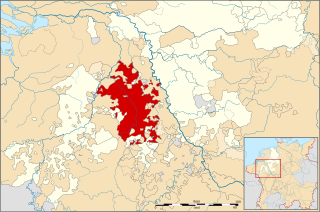
The Duchy of Jülich comprised a state within the Holy Roman Empire from the 11th to the 18th centuries. The duchy lay west of the Rhine river and was bordered by the Electorate of Cologne to the east and the Duchy of Limburg to the west. It had territories on both sides of the river Rur, around its capital Jülich – the former Roman Iuliacum – in the lower Rhineland. The duchy amalgamated with the County of Berg beyond the Rhine in 1423, and from then on also became known as Jülich-Berg. Later it became part of the United Duchies of Jülich-Cleves-Berg.

The coat of arms of Luxembourg has its origins in the Middle Ages and was derived from the arms of the Duchy of Limburg, in modern-day Belgium and the Netherlands. In heraldic language, the arms are described as: Barry of ten Argent and Azure, a Lion rampant queue forchée Gules crowned, armed and langued Or.

Burg Castle, located in Burg an der Wupper (Solingen), is the largest reconstructed castle in North Rhine-Westphalia, Germany and a popular tourist attraction. Its early history is closely connected to the rise of the Duchy of Berg.
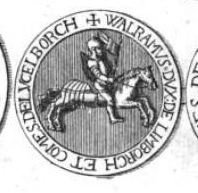
Waleran III was initially lord of Montjoie, then count of Luxembourg from 1214. He became count of Arlon and duke of Limburg on his father's death in 1221. He was the son of Henry III of Limburg and Sophia of Saarbrücken.

Henry IV was the duke of Limburg and count of Berg from 1226 to his death. He was the son of Waleran III, count of Luxembourg and duke of Limburg, and Cunigunda, daughter of Frederick I, Duke of Lorraine.

Henry VI was Count of Luxembourg and Arlon from the death of his father, Henry V the Blond, in 1281 until his own death at the battle of Worringen, seven years later, when he was succeeded by his son, Henry VII.
Waleran, Galeran, or Walram is a Germanic first name, common in the Middle Ages, that may refer to:

SiegfriedII of Westerburg was Archbishop of Cologne from 1275 to 1297.

Walram, Count of Jülich was the second son of William IV, Count of Jülich and Richardis of Guelders, daughter of Gerard III, Count of Guelders.
Henry of Berg, Lord of Windeck was the son of Adolf VII of Berg and Margaret of Hochstaden. He was the younger brother of Adolf VIII of Berg and William I of Berg.
Adolf VIII of Berg was the eldest son of Count Adolf VII of Berg and Margaret of Hochstaden.
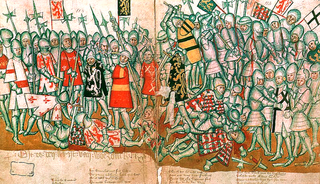
Reginald I of Guelders was Count of Guelders from January 10, 1271 until his death. He was the son of Otto II, Count of Guelders and Philippe of Dammartin.

Waleran I of Luxembourg was Lord of Ligny and La Roche around 1281.

The War of the Limburg Succession was a conflict between 1283 and 1289 for the succession in the Duchy of Limburg.

Henry V the Blondell, called the Great, was the Count of Arlon from 1226 to his death, lord of Ligny from 1240 to his death, Count of Luxembourg and Laroche from 1247 to his death, and the Marquis of Namur between 1256 and 1264 as Henry III. He was the son and successor of Waleran III, Duke of Limburg and Ermesinde, Countess of Luxembourg.
Ermengarde was the ruling suo jure Duchess of Limburg from 1279 to 1283. She was the daughter of Judith of Kleve and Waleran IV, Duke of Limburg. She was named after her paternal grandmother.
The House of Limburg was a dynasty which can be traced back in the male line as far as Henry, count of Limburg, whose mother Jutta was heiress of Frederick, Duke of Lower Lorraine in the House of Ardenne–Luxembourg. Henry was also related to the counts of Arlon. Waleran I was probably his father-in-law rather than his father.
